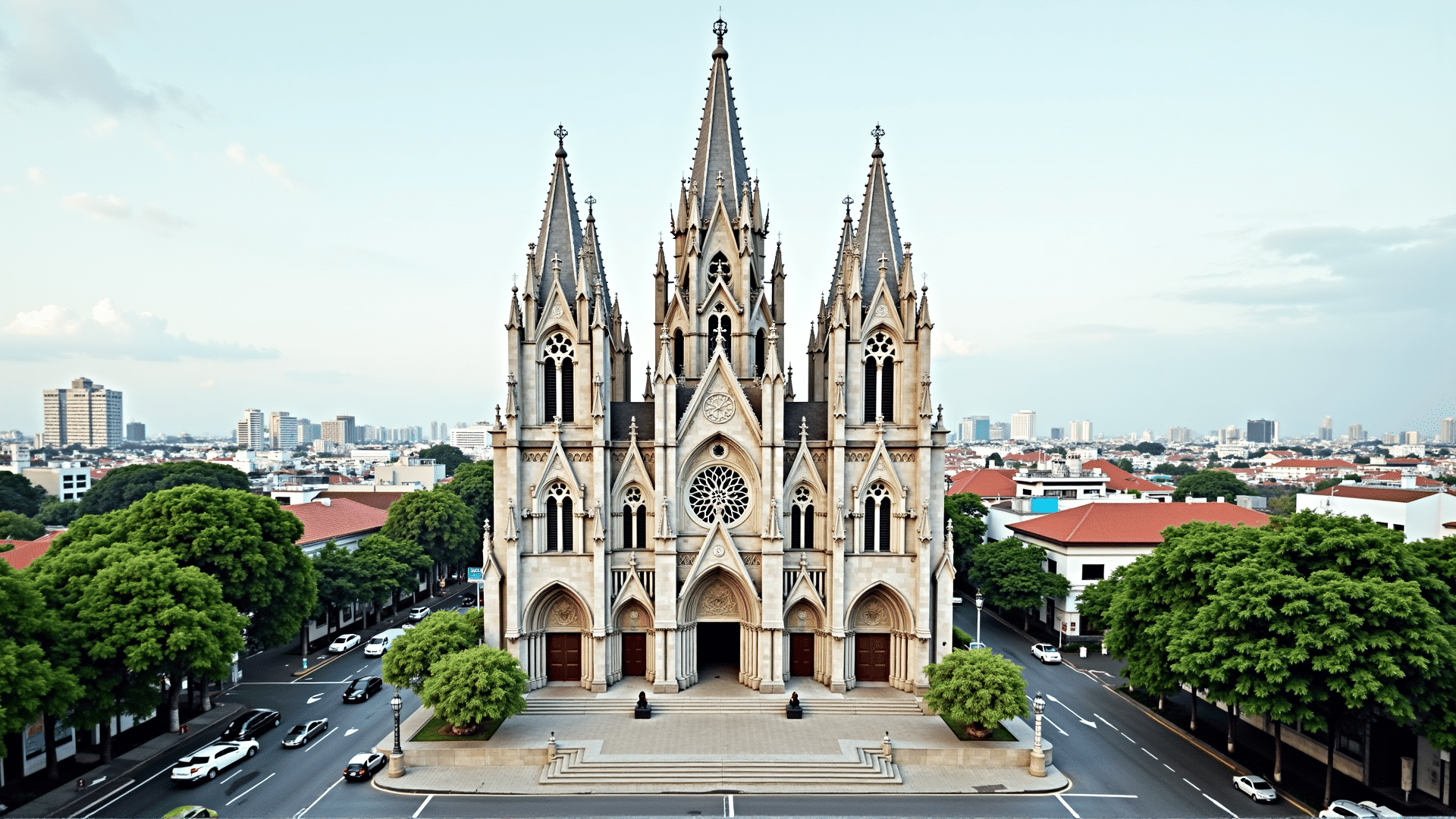Nestled in the historic district of Intramuros, the Manila Cathedral stands as a remarkable testament to the rich cultural and spiritual heritage of the Philippines. Since its original establishment in 1571, this magnificent structure has been a beacon of faith and an exquisite example of Romanesque revival architecture.
Walking through its venerable doors, visitors are greeted by a stunning array of artistic and architectural details. The grand façade, with its intricate rose window and beautifully carved statues, sets the stage for the awe-inspiring interior that awaits. The combination of high vaulted ceilings, elegantly designed stained glass windows, and the reverent hush that envelops this house of worship creates a tranquil space for reflection and devotion.
The cathedral has endured its share of challenges over the centuries. It has been rebuilt multiple times due to natural disasters, a reflection of the resilience and determination of the faithful community it serves. Each reconstruction has added layers of depth to its history, infusing it with a unique blend of the old and new that continues to charm visitors and parishioners alike.
Beyond its architectural grandeur, the Manila Cathedral holds a central place in the spiritual life of the nation. It has hosted numerous religious ceremonies of significant importance, including papal visits and ordinations. These events underscore its role not just as a religious sanctuary, but also as a symbol of unity and hope for the Filipino people.
The surrounding grounds of the cathedral offer a serene escape from the bustling city life. Visitors can wander through its tranquil gardens, pausing to admire the blend of historical landmarks and modern amenities that provide spaces for contemplation and community gatherings.
A visit to the Manila Cathedral is not merely an exploration of a historical site, but a journey through the rich tapestry of Filipino heritage and faith. Whether you are drawn by its artistic beauty or its profound spiritual significance, the cathedral continues to stand as a living testament to the enduring spirit of the Philippines.
